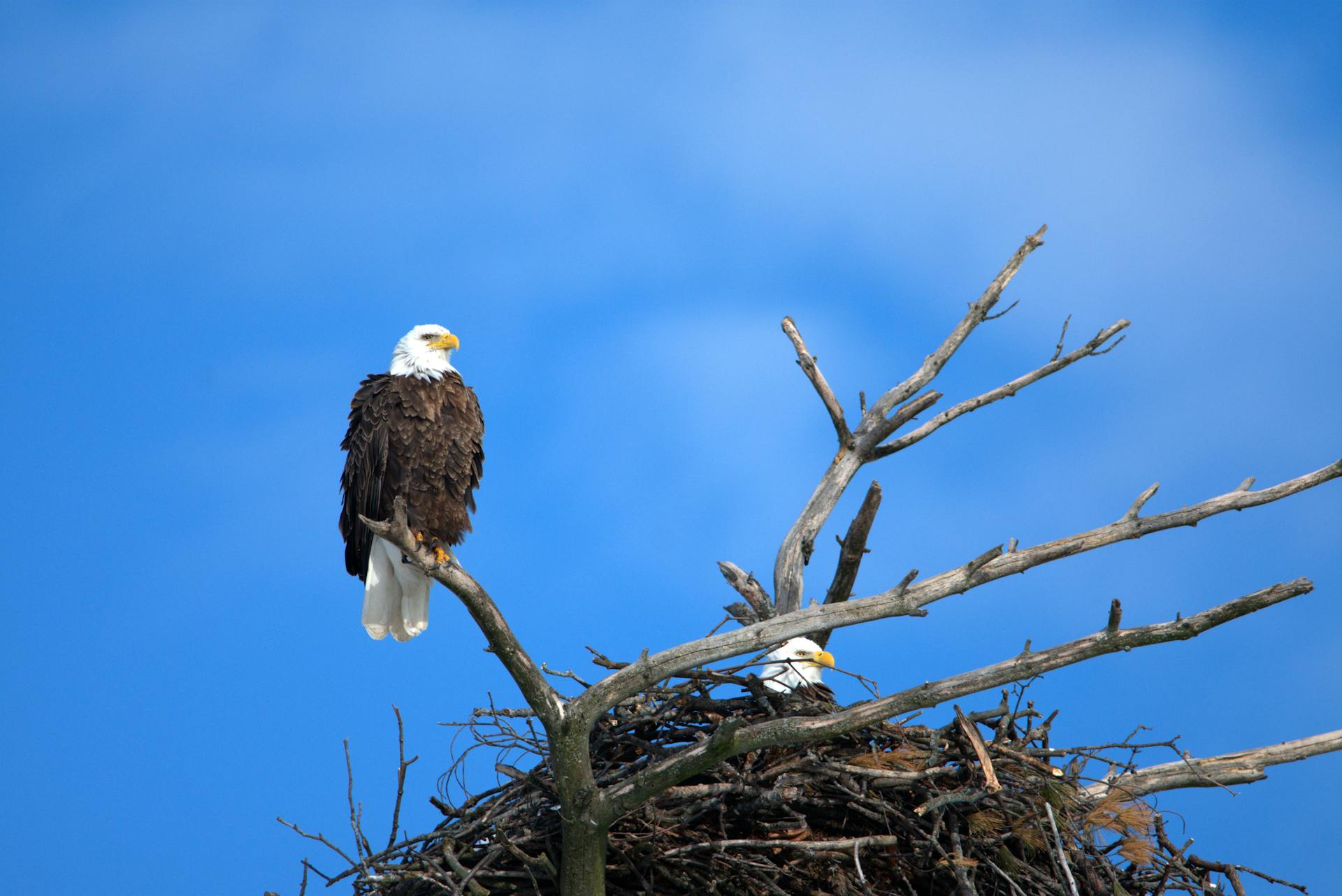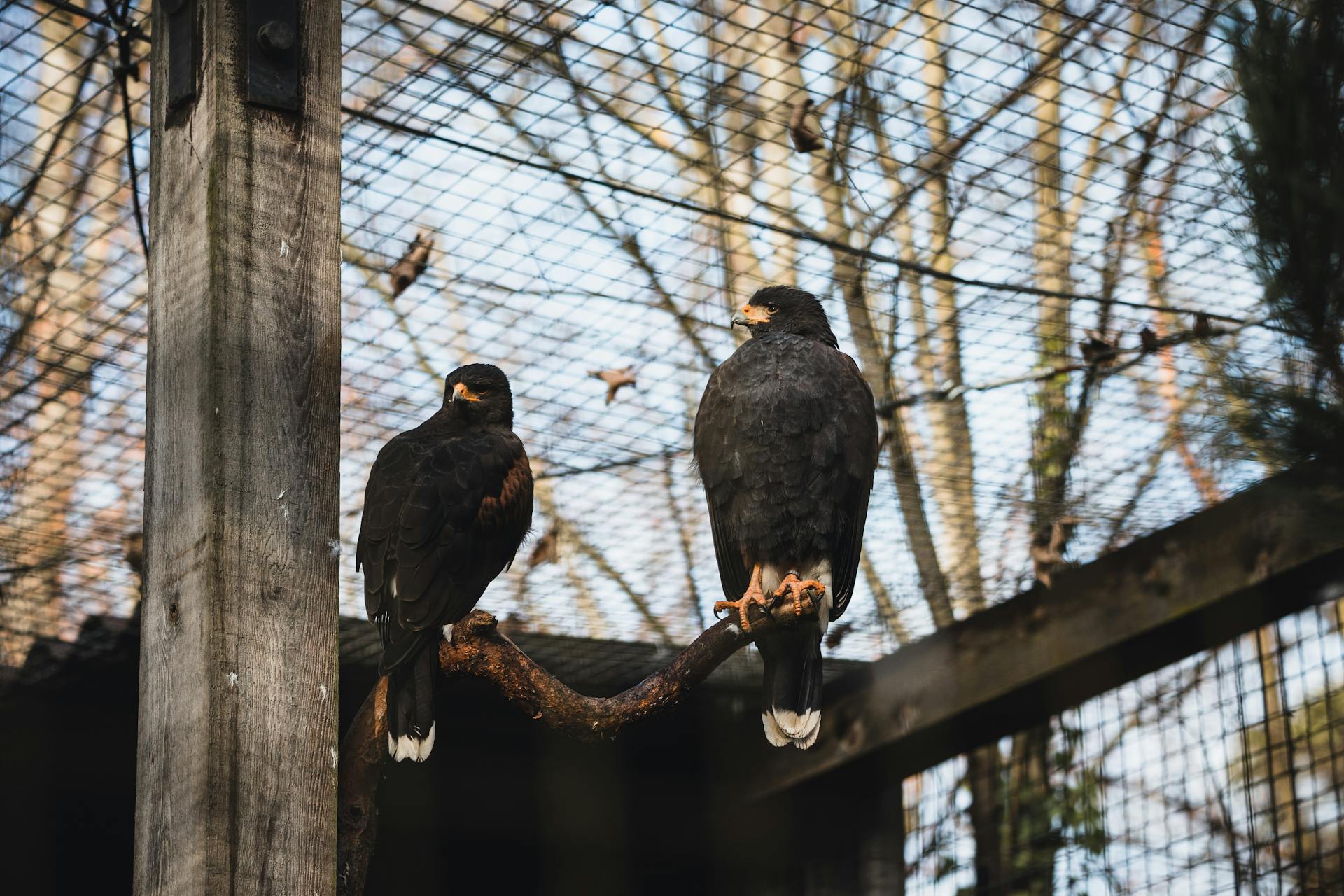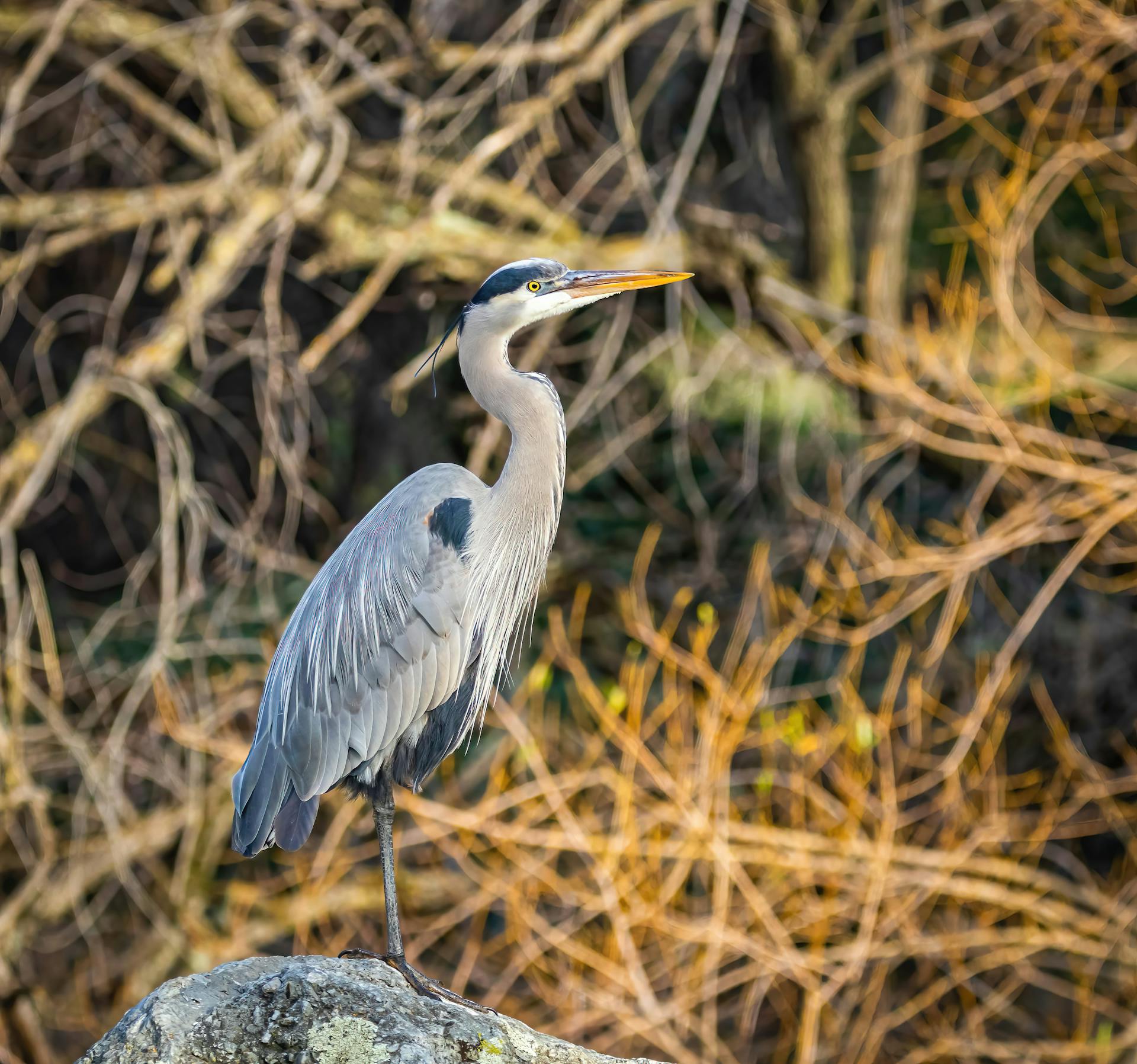
Most birds are protected by state and federal laws, so it is important to be careful when attempting to remove a bird's nest. In some cases, it may be best to contact a wildlife rehabilitator or licensed wildlife removal specialist to handle the situation.
The following are some general tips for deterring birds from nesting in your soffit:
- Inspect your soffit regularly and seal any holes or gaps that you find.
- Install a physical barrier such as chicken wire over the soffit opening.
- Offer the birds an alternate nesting site such as a birdhouse or nesting platform.
- Use a commercial bird repellent spray around the perimeter of your home.
- Keep your yard and landscaping well-maintained as overgrown areas can provide hiding places for birds.
- Reduce sources of food and water that may attract birds to your property.
If you have tried these tips and the birds are still nesting in your soffit, you may need to remove the nest. This can be a difficult and dangerous task, so it is important to consult with a professional before taking any action.
Additional reading: Remove Bird Nest
What are soffit vents?
Soffit vents are vents that are installed in the soffit, or the underside of the roof overhang. They are used to ventilate the attic space and help prevent moisture and mold buildup.
Soffit vents come in a variety of sizes and shapes, and can be made of plastic, wood, or metal. They are installed using screws or nails, and some types of soffit vents can be attached directly to the roof sheathing.
Soffit vents are an important part of a home’s ventilation system, and should be installed in conjunction with other types of vents, such as ridge vents or gable vents. They help to ensure that the attic space is properly ventilated, and that moist air is able to escape.
Soffit vents should be installed in every section of the soffit, and should be evenly spaced. There should be at least one square foot of soffit venting for every 300 square feet of attic floor space.
Soffit vents are an important part of keeping your home’s attic space dry and free of moisture. Without proper ventilation, attics can become humid and damp, leading to the growth of mold and mildew. Soffit vents help to prevent this by allowing air to circulate and keeping the attic space dry.
For your interest: Prevent Birds Nesting
What kind of birds are known to nest in soffit vents?
There are a variety of birds that are known to nest in soffit vents. Some of the more common birds include sparrows, finches, and wrens. However, there are a number of other types of birds that have also been known to nest in soffit vents as well.
The most important factor that determines whether or not a bird will nest in a soffit vent is the size of the opening. The opening must be big enough for the bird to comfortably enter and exit the nest. Additionally, the opening must be small enough that the bird feels safe and secure from predators.
Another important factor is the height of the soffit vent. Birds generally prefer to nest in soffit vents that are located high off the ground. This provides them with a better vantage point to spot predators and also helps to keep the nest warm.
Finally, the material of the soffit vent is also important. Birds generally prefer to nest in vents made of soft materials such as wood or cloth. This helps to cushion the eggs and keep them warm.
If you have a soffit vent that meets all of these criteria, then there is a good chance that a bird will nest in it. However, there is no guarantee that a bird will nest in your soffit vent. If you want to attract birds to your soffit vent, you can try hanging a nesting box nearby.
What are the consequences of birds nesting in soffit vents?
There are a few consequences to birds nesting in soffit vents. First, the birds may block the ventilation, causing the home to overheat. Second, the weight of the nesting materials can cause the soffit to collapse. Third, the droppings from the birds can cause stains and attract other pests. Finally, the birds may bring disease into the home.
How can I prevent birds from nesting in my soffit vents?
Birds are crafty little creatures and they will find any way they can to make a nest. One way they will try to nest is in your soffit vents. There are a few ways you can help to prevent this from happening.
First, you can make sure that your soffit vents have screens on them. This will help to keep the birds out and will also keep other pests from getting into your home.
You can also trim back any trees or bushes that are close to your home. Birds like to nest in these areas because they feel safe and protected. If you trim back these areas, the birds will be less likely to nest near your home.
Finally, you can use a product like bird netting around your soffit vents. This will create a physical barrier that the birds will not be able to get through.
If you follow these tips, you should be able to prevent birds from nesting in your soffit vents.
What can I do to deter birds from nesting in my soffit vents?
It is not uncommon for birds to take up residence in soffit vents, especially if the vents are located close to trees or other areas where birds are known to congregate. While these feathered tenants may seem harmless, they can actually cause a number of problems for homeowners. Birds can create a fire hazard by building nests that block airflow through the vents, which can cause the temperature in the attic to rise to dangerous levels. In addition, bird droppings can contaminate the air in the home and lead to respiratory problems for residents.
There are a number of things that homeowners can do to deter birds from nesting in their soffit vents. One option is to install wire mesh over the vents. This will prevent birds from being able to enter the vents and will also allow air to flow freely through the vents, eliminating the fire hazard posed by blocked vents. Another option is to treat the soffit vents with a bird repellent spray. This spray will make the surface of the vents unpleasant for birds, causing them to avoid nesting in the vents.
whichever option you choose, it is important to take action to deter birds from nesting in your soffit vents. Not only can this create a fire hazard, but it can also lead to respiratory problems for residents of the home. By taking some simple precautions, you can keep your home safe and free of birds.
Is it harmful to birds if they nest in my soffit vents?
If you are considering allowing birds to nest in your soffit vents, there are a few things you should take into account to ensure the safety of the birds. First, you will need to make sure that the soffit vents are large enough for the birds to comfortably nest in. Second, you will want to make sure that the soffit vents are not obstructed by anything that could block the birds' access to the outside. Third, you will want to make sure that the temperature inside the soffit vents is not too hot or too cold for the birds.
Ultimately, as long as you take these precautions into account, it should not be harmful for birds to nest in your soffit vents. In fact, providing a safe and comfortable nesting spot for birds can actually be beneficial for them. Birds that have a safe place to nest are less likely to be preyed upon or to contract diseases. Additionally, by nesting in your soffit vents, the birds can help to keep your home free of pests.
What should I do if I find a bird's nest in my soffit vents?
As you enjoy the warm weather, you may find an unwelcome visitor in your soffit vents- a bird’s nest. Although it may be startling to find a bird’s nest in your home, there are a few things you can do to safely remove it and prevent it from happening again.
If you find a bird’s nest in your soffit vents, the first thing you should do is assess the situation. Is the nest active? Are there any eggs or baby birds present? If so, it is important to take extra care in removing the nest to avoid harming the birds. If the nest is inactive, you can safely remove it without harming any wildlife.
Once you have assessed the situation, you can begin to remove the nest. If the nest is active, it is best to contact a professional wildlife removal service to safely remove the nest and release the birds back into the wild. If the nest is inactive, you can remove it yourself using a pair of gloves and a dustpan.
After you have removed the bird’s nest, you should take a few precautions to prevent future nesting. Inspect your soffit vents and make sure they are securely fastened. If necessary, add screening to the vents to keep birds out. You can also deter birds from nesting by making loud noises or spraying the area with a hose if they return.
Although finding a bird’s nest in your home can be unexpected, there is no need to worry. By taking a few simple steps, you can safely remove the nest and prevent future nesting.
For another approach, see: Safely Clean
How can I tell if birds are nesting in my soffit vents?
If you think birds might be nesting in your soffit vents, there are a few things you can look for to be sure. First, check for birds flying in and out of the vents or sitting on the roof near the vents. If you see birds doing either of these things, it's likely they are nesting in the vents. Second, check for nesting material, such as straw, twigs, or feathers, near the vents or in the vents themselves. Finally, listen for bird sounds coming from the vents. If you hear chirping, cooing, or other bird sounds coming from the vents, it's likely that birds are nesting inside.
Can anything be done to keep birds from nesting in soffit vents altogether?
There are a few things that can be done to keep birds from nesting in soffit vents jointly. One way is to place mesh wire over the soffit vents. This will make it more difficult for birds to access the vents and will also deter them from nesting. Another way to keep birds from nesting in soffit vents is to treat the area with a bird deterrent spray. This spray will make the area less attractive to birds and will also help to keep them away.
Frequently Asked Questions
How do you stop birds from nesting in soffits?
Cleaning out any holes or gaps in your property, fixing a fine wire mesh over entrances to nests and deterrents like noise.
How do you get rid of a bird nest?
If the nest is in a tree, you can use a rope to secure it to the tree trunk and cut off the open end. If the nest is on the ground, cover it with a cloth or tarp and stake it down.
How do you keep pigeons and sparrows out of your garden?
One way to discourage pigeons and sparrows from your garden is to use bird netting or repellent spikes. Bird netting can be purchased at most garden stores. It is made of a sturdy mesh material with a metal frame. The netting opens and closes like a trap, providing an ideal hiding place for birds. Insert the spikes into the top corners of the netting so that they protrude about 3 inches. This will keep the birds away from the area while allowing beneficial bugs and spiders to enter.
How do you keep Swallows from nesting in the eaves?
One way to discourage swallows from nesting in the eaves of your home is to install an external bird feeder. Swallows are naturally attracted to these feeders and will not seek out homes in which they can lay their eggs.
Is it possible to get rid of birds in soffits?
There is no one-size-fits-all answer to this question, as the best way to get rid of birds in soffits depends on the severity of the problem and what type of birds are causing it. However, some tips that may help include using a bird net or repelling device, installing a bird feeder or removal system, and chasing the birds away with an aerosol can.
Sources
- https://www.coastlinewindows.co.uk/blog/how-to-stop-birds-nesting-in-a-soffit
- https://www.charlottestories.com/how-to-keep-birds-out-of-your-soffit/
- https://www.skedaddlewildlife.com/location/richmond-hill/blog/how-to-deal-with-birds-in-soffit/
- https://doyle.iliensale.com/how-to-stop-birds-nesting-in-soffit/
- https://rainbowrunfarm.com/how-to-get-birds-out-of-soffit/
- https://community.rspb.org.uk/about/f/tips-and-tricks/200829/birds-nesting-in-soffitts
- https://roofinginsights.com/what-is-a-soffit-vent/
- https://copperlab.com/blogs/guides/what-is-a-soffit-vent
- https://roofcritics.com/types-of-soffit-vents/
- https://www.remodelormove.com/how-many-soffit-vents-should-a-house-have/
- https://animalcontrolspecialists.com/blog/birds-that-nest/
Featured Images: pexels.com


